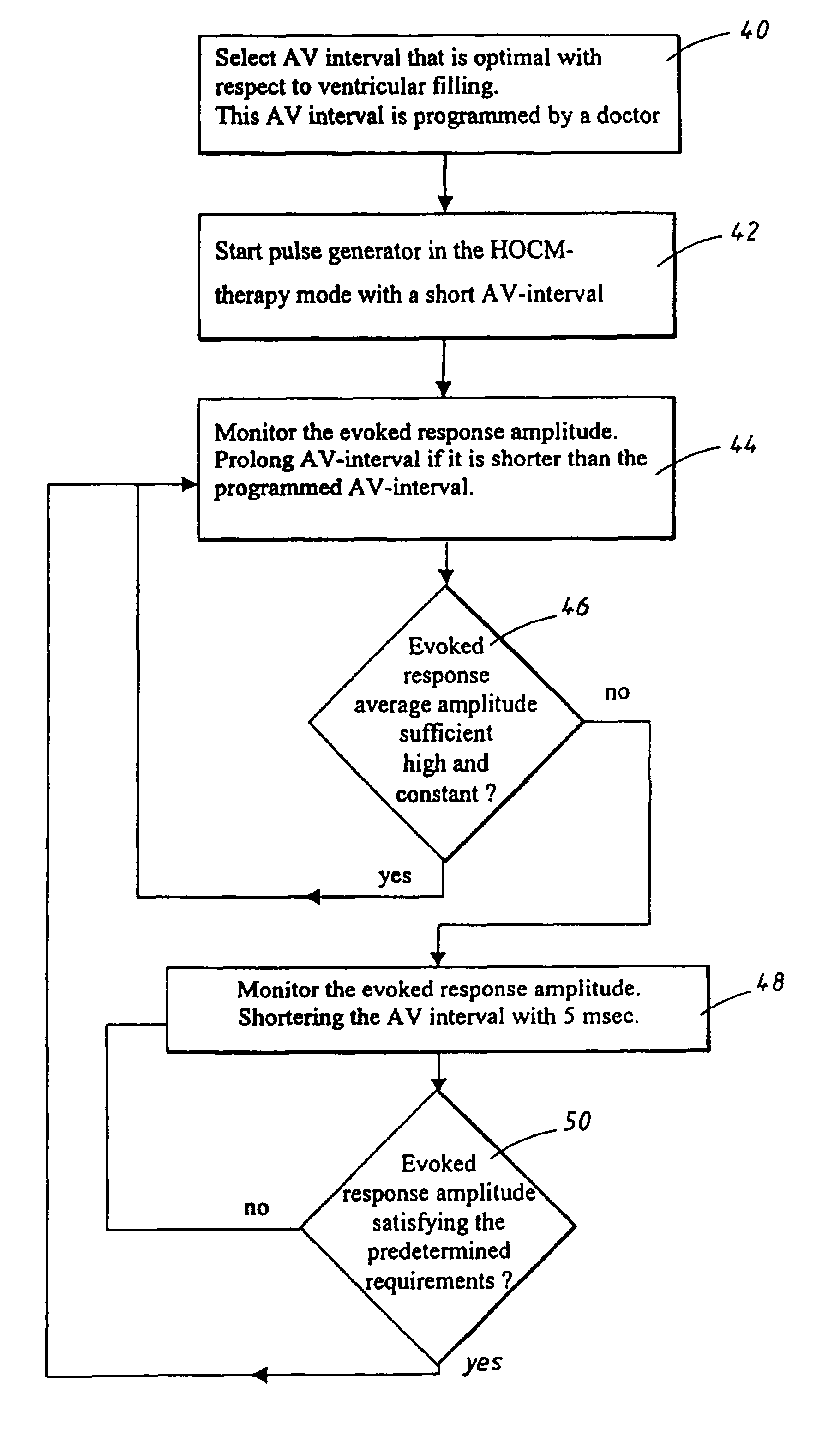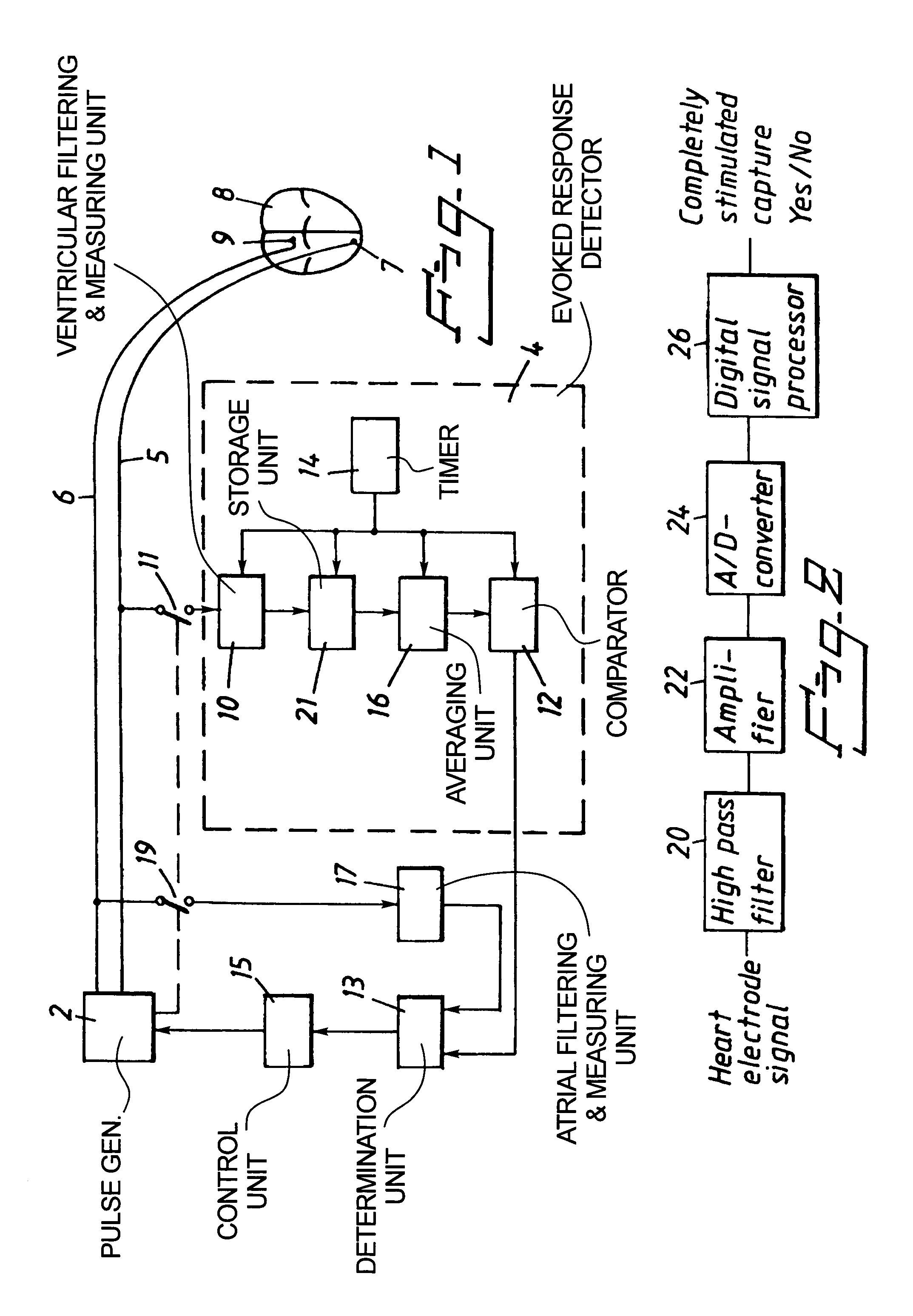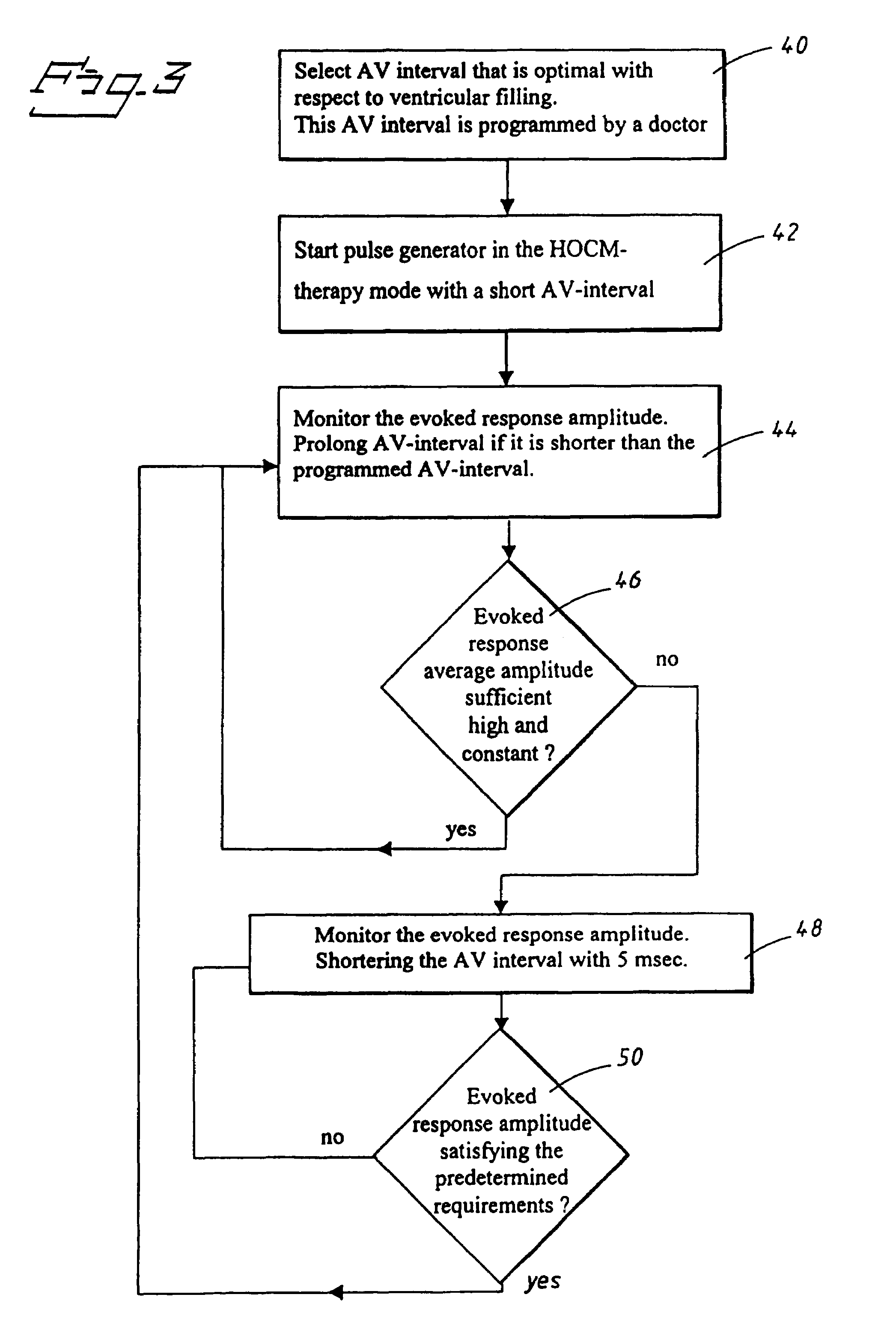Dual chamber heart stimulator with evoked response detector
a heart stimulator and detector technology, applied in the field of heart stimulators, can solve the problems of increased clinical risks in the event of a pacemaker failure, progressive degree of outflow tract obstruction, etc., and achieve the effect of simple and reliable way
- Summary
- Abstract
- Description
- Claims
- Application Information
AI Technical Summary
Benefits of technology
Problems solved by technology
Method used
Image
Examples
Embodiment Construction
[0022]It is known to distinguish between completely stimulated captures, fusion beats and losses of capture from analysis of average amplitude values of recorded ventricular signals during a predetermined time window after a pacemaker stimulation, see Åsa Uhrenius et al., “Evaluation of new Algorithms for Autocapture with Unipolar Leads”, CARDIOSTIM 98, Nice, June 1998.
[0023]FIG. 1 shows a block diagram of the basic components of the heart stimulator according to the invention. The stimulator has a pulse generator 2 which through leads 5, 6 and associated atrial and ventricular electrodes 7, 9 are connected to the heart 8 of a patient. The pulse generator 2 is devised to produce stimulation pulses of varying amplitudes which through the leads 5, 6 with their electrodes 7, 9 are transferred to the heart 8. An evoked response detector 4 of the above mentioned type is connected to the ventricular lead 5. An atrial detector having an atrial filtering and measuring unit 17 is connected t...
PUM
 Login to View More
Login to View More Abstract
Description
Claims
Application Information
 Login to View More
Login to View More - R&D
- Intellectual Property
- Life Sciences
- Materials
- Tech Scout
- Unparalleled Data Quality
- Higher Quality Content
- 60% Fewer Hallucinations
Browse by: Latest US Patents, China's latest patents, Technical Efficacy Thesaurus, Application Domain, Technology Topic, Popular Technical Reports.
© 2025 PatSnap. All rights reserved.Legal|Privacy policy|Modern Slavery Act Transparency Statement|Sitemap|About US| Contact US: help@patsnap.com



